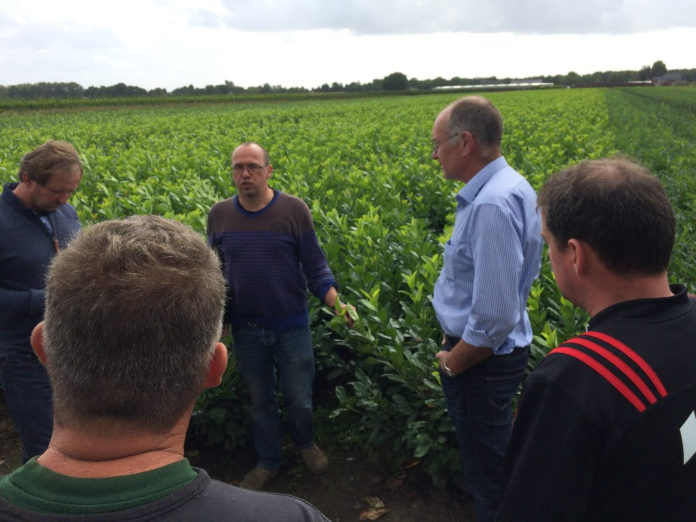Autumn has arrived with no sign of an Indian summer to generate extra sales. Temperatures are falling back quickly at present and the first autumn storms have been and gone.
It’s 12 months since the first Teagasc Nursery Stock monthly bulletin was distributed. Thank you subscribing and reading- there are now in excess of 200 subscribers. Thank you for the positive feedback also, if you have any ideas for content please let me know.
As mentioned last month there is continuing worry about some plant health issues in Europe – some real, some only being protectionist of home markets. The impact is being felt keenly in Italy. Xylella and economic conditions have contributed to the demise of some nurseries and I hear some large nurseries are close to going under. As island nations Ireland and the UK have the best opportunity to remain free of disease and to use this to our advantage. This will be a hot topic at the nursery stock seminar in Ashtown on October 25th.
There are number of changes in pesticides happening his month – see below. You can stay up to date of changes by visiting Teagasc pesticide blog.
Successful study tour to Netherlands

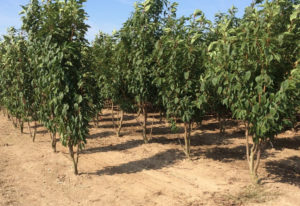

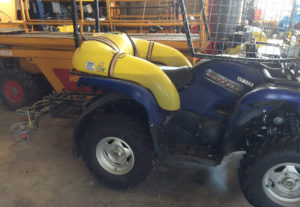

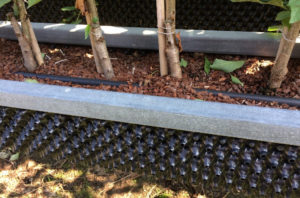

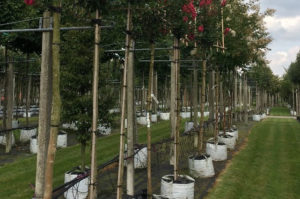

A group of seven nursery men visited Ophesuden and Zundert visiting some of the best growers in the area. It is inspiring to see the scale and quality of trees being grown. The speed at which they can produce trees of any size is astonishing.
There was plenty to learn on the trip but some key take home messages not withstanding scale were:
- care for soil- avoid compaction, low weight spraying systems, reduce erosion, use break crops, establish good roadways
- contractors can solve some staffing problems and provide opportunities to establish in the trade with out land
- land prices demand high returns – €90,000 hectare to buy but about €1,000 to rent
- weed control is managed increasingly by physical means e.g. tree bags that close on top, bark chip on gutter tops, young teenagers working for very low wages
- demand for container trees and named bare root varieties of shrubs is increasing
- comfortable working conditions e.g. budding at gutter height increases success & productivity
- environmental concerns catch up up on the industry – get ahead if you can e.g. degradable pots, reduced fertilizer run off with grass strips, opportunities that arise with quality schemes etc


The nursery stock event held at Ravensberg nursery on August 31st was supported with great interest. Jan and Hans Ravensberg gave us an insight in to their propagation by grafting and cutting of a range of uncommon trees and shrubs. There was a good discussion also on use of acid dosing to soften hard water – a good opportunity to learn from some others with personal experience. Hairy pot toppers are being used here and it was of interest to all there. Thanks again to all the team for hosting the event and sharing their information so freely – I was so absorbed in the discussions I forgot to take photos, thanks to Jan for the one above.
Nostoc – jelly/slime mould


This jelly like slime is a blue green algae. It is often seen after heavy rain on gravel or after irrigation. The slime and is most common on limestone gravel and is more than happy to grow on mypex. On gravel, it disappears when it drys out but in a nursery, with overhead irrigation, it continues to grow. It is a particular problem with liquid feeding or acid dosing of irrigation water. It is a real slip hazard!
Solving the problem
- Environment If water and food can be removed – drainage and controlled release fertilizer, there should be a reduction in its growth. Cleaning mypex between crops with bleach solution should also help for a short time but it will grow back.
- Treatments. Products that have been reported to be successful include sodium carbonate (washing crystals) (1kg dissolved in 10L hot water covers 7m2), commercial mould remover products e.g. Algo Clear and Hg Garden Moss, Algae & Mould Remover (both have active ingredient quaternary ammonium). These products should not be applied to plant material.
- Fungicides. Both clorothalonil and mancozeb may have an impact when used repeatedly at 14-day intervals- however, this is not indicated on their labels.
Pest & Disease Updates
Temperature and light levels are slowly dropping. There is still a need be mindful of foliar diseases – increase spacing where possible and ventilate as much as is practical.
Nutrition should be focused on potassium (K) now to encourage firming of plants that will be more resilient to cool temperatures. Higher rates of nitrogen will encourage soft growth that will be more susceptible to disease.
Spider mites are still active and can be targeted with IPM programmes. The adults will likely become dormant by the end of October depending on temperatures. While they are active a clean up spray e.g. Dynamec, would be useful to limit over wintering numbers.
Vine weevil control using nematodes is in full swing, isolation and treatment of the most vulnerable crops is ideal but not always practical.
Invasive Weed control
Japanese Knotweed – it is a destructive non-native weed easily spread during hedge cutting. A piece of stem no more than 5cm can re-establish as a new plant. Catherine Keena Teagasc Countryside Management Specialist says “not to cut, mow, strim or disturb this plant. The optimum time to control Japanese Knotweed with the herbicide glyphosate is when the plant has flowered.” Treatment now as the plant is drawing down food stores to its roots will also help to translocate the herbicide.
Field Horse tale – It is a tough weed to control. I have heard of it getting into tree lines leaving growers with very difficult decisions to make. It should be controlled now before it becomes dormant however the ideal control time is reported to be in spring. The only herbicide I have seen with on label recommendations for its control is contains Glufosinate ammonium e.g. Finale, Pearl and Tailout. From personal observation it appears to be more effective at knock down than glyphosate; however, as it is not systemic repeat control is likely to be required. Bruised stems rather than broken will take up the herbicide best. I have heard of Triclopyr + Clopyralid e.g. Thistlex/ Blaster pro/ Grazon 90 being used fruit trees but can’t report on its effectiveness yet.
Registration changes and recently withdrawn products- Reminder
Registration of a large number of pesticides will lapse by the end of September (Basta, Nettel Ban, Ban Dock, Score 250, Mirador etc.) There is a full list available here (pdf) or on the PRCD web site.
Iprodione
The popular fungicide will be withdrawn in the EU following the latest decision by the commission. Iprodione is a contact and/or locally systemic fungicide used to control a broad range of root and stem rots, moulds and mildews on a wide variety of plants. Rovral is no longer being produced by Bayer. Expect last sales of it on the market to be end of January 2018. Last use end of Januray 2019. Sales and distribution of Acamara and Grisu (both contain Iprodione and approved for nursery use) will vary but will eventually end also.
New aphicide approved for use in tillage/vegetable crops
The product named Closer containing sulfoxaflor is approved for use in some vegetables in Ireland since the beginning of September. It has a wide range of approved uses in USA and it is hopeful it will be approved for ornamental use here – I’ll keep you posted.
See the Teagasc pesticide blog to keep up-to-date with the latest news and changes.
Glyphosate storm continues
Its a pesticide that’s rarely out of the headlines in the last year or two. The latest update is that France is due to vote on deciding to revoke its registration at the end of September. There is passionate debate on boths sides of the argument. The best, balanced article I have read was by Caroline O’Doherty in the Examiner paper some months ago and is well worth a read – Battle to ban Roundup: Government rows back on banning chemical used in growing food crops



